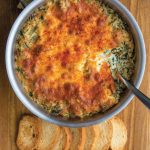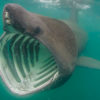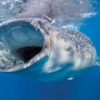Classic Crab Dip

I love Dungeness crab found in our local waters, but every now and then I also like to create recipes using crabmeat from the East Coast’s predominant species, the Atlantic blue crab. There are many variations of the classic crab dip appetizer often served at cocktail parties. I hope you’ll enjoy my version, which features creamy Swiss and Parmesan cheeses, fresh herbs and cayenne pepper for a bit of heat.
Remember, “Always ‘Stay Legal,’ and never take more than you’ll eat.”
- 16 oz. cream cheese (softened)
- 1.5 lbs. lump crabmeat
- 1 16- ounce can artichoke bottoms
- drained and chopped
- 2 cups baby spinach (loosely chopped)
- ½ cup sliced green onions
- ½ cup grated Swiss cheese
- ¼ cup shredded Parmesan cheese
- ¼ cup mayonnaise (not low-fat)
- 3 cloves garlic (crushed and diced)
- 2 tsp. fresh thyme (chopped)
- 1 tsp. fresh oregano (chopped)
- 1 tsp. Worcestershire sauce
- ¼ tsp. cayenne pepper or red chili flakes
- Sea salt and white pepper to taste
- Preheat oven to 375 degrees F.
- In a large bowl, combine main ingredients and gently fold together until well mixed. Season with salt and pepper. Coat the interior of a large casserole dish with butter and fill with crab dip mixture. Top with remaining Swiss and Parmesan cheese and sprinkle with smoked paprika. Bake uncovered for about 30 minutes, or until the top is golden brown and bubbly. Serve with your choice of toasted baguette slices, pita bread or even plain tortilla chips.
Pairing Suggestions
This dip pairs nicely with a California Riesling or your favorite sparkling wine.
Atlantic Blue Crab Info
Family: Portunidae
Genus and Species: Callinectes sapidus
Other Common Names: Chesapeake blue crab or Atlantic blue crab, or simply blue crab. The blue crab’s scientific name translated from Latin means, “beautiful savory swimmer.”
Description: Blue crabs are sexually dimorphic, meaning sexes occur in distinct forms. Males have blue claws and a narrow abdominal apron. Females have red-tipped claws (“painted fingernails”) and a broad abdominal apron.
Habitat and Range: Found along the Atlantic coast from Nova Scotia to Argentina, it inhabits shallow sandy bottoms and sea grass beds. Blue crabs occupy a wide variety of habitats throughout their life history. Offshore, high-salinity waters are used during early larval stages. Larvae move into the estuary and use intertidal marshes, seagrass beds, and soft-sediment shorelines as they grow. Crabs are highly tolerant of temperature and salinity variations.
Fishing Information: Harvested commercially and recreationally, April through September. Recreational harvest is done using pots or nets. California residents will find Chesapeake blue crab in specialty seafood markets.







